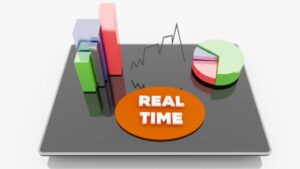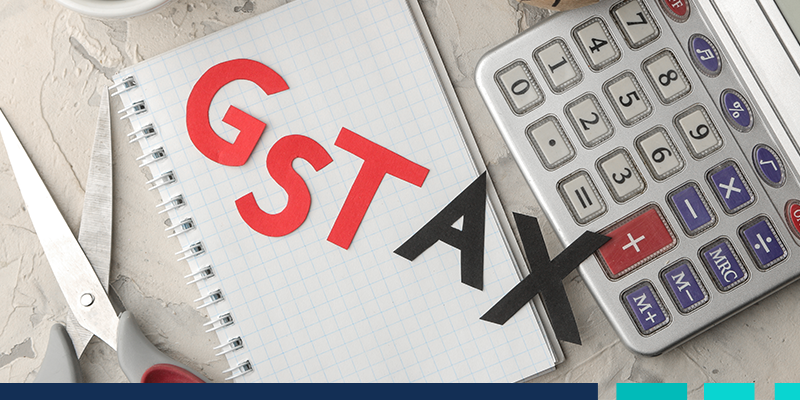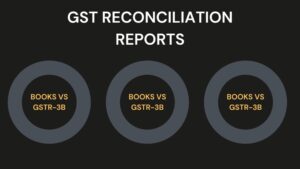Since the introduction of the Goods and Services Tax (GST), businesses have had to adapt to new regulations and requirements for managing their tax compliance. One crucial aspect of GST compliance is undertaking regular reconciliation of sales and purchase data with the corresponding GST returns filed. To streamline this process and ensure accuracy, investing in GST reconciliation software is a smart decision for businesses. In this blog by BiCXO, we will explore five reasons why investing in such software can benefit your organization.
1. Increased Accuracy and Efficiency:
Manual reconciliation of GST data is a time-consuming process that is prone to errors. However, GST reconciliation software automates this task, reducing the chances of human error and ensuring accuracy. With advanced algorithms and data matching capabilities, the software can identify discrepancies and discrepancies in real-time, enabling you to rectify issues promptly and avoid penalties.
2. Time and Cost Savings:
By automating the GST reconciliation process, businesses can save significant time and resources. The software can handle large volumes of data efficiently, eliminating the need for manual data entry and repetitive tasks. This frees up valuable staff hours, allowing them to focus on more critical business activities. Additionally, the software helps identify any potential tax credits or refunds that may have been overlooked, leading to cost savings.
3. Enhanced Compliance:
Compliance with GST regulations is crucial for businesses to avoid penalties and maintain a good reputation. GST reconciliation software ensures that your organization remains compliant by comparing sales and purchase data with filed GST returns. It identifies any discrepancies or missing invoices, alerting you to potential compliance issues, such as incorrect tax rates or unreported transactions. This proactive approach helps you rectify errors promptly and avoid any non-compliance consequences.
4. Real-Time Monitoring and Reporting:
GST reconciliation software provides real-time monitoring and reporting features, enabling you to stay on top of your GST data at all times. You can access comprehensive reports and dashboards that provide insights into your organization’s GST compliance status, tax liabilities, and potential refunds. This visibility helps you make informed decisions and take necessary actions to maintain compliance and optimize your tax strategy.
5. Integration and Scalability:
Investing in GST reconciliation software that seamlessly integrates with your existing ERP or accounting systems can further streamline your tax compliance processes. The software can automatically fetch data from various sources, eliminating the need for manual data extraction and transfer. Moreover, as your
business grows, the software can scale accordingly, accommodating increasing data volumes and complexity without compromising accuracy or efficiency. Data analytics and reporting capabilities of the software
The data analytics and reporting capabilities of the GST reconciliation software provide businesses with valuable insights and streamlined reporting processes. Here’s a breakdown of these capabilities:
1. Data Analytics:
The software leverages advanced analytics techniques to analyze the GST data collected from various sources. It identifies patterns, trends, and anomalies within the data, allowing businesses to gain a deeper understanding of their tax-related information. These insights help in identifying potential areas for improvement, optimizing tax planning strategies, and making data-driven decisions.
2. Reporting: The software generates comprehensive reports, visualizations, and dashboards based on the analysed GST data. These reports provide a holistic view of the company’s tax-related metrics, allowing for effective monitoring and tracking of GST compliance, tax liabilities, refunds, and other important parameters. The reports can be customized to meet specific business needs, providing relevant information in an easily understandable format. Overall, the data analytics and reporting capabilities of the GST reconciliation software empower businesses to unlock valuable insights, ensure compliance, and make informed decisions based on accurate and up-to-date GST data.
GST reconciliation software reports:
Reconciliation reports are the unsung heroes of GST compliance. These reports compare data from various sources to identify discrepancies and ensure accurate tax filing. Let’s delve into the critical role they play in bridging the gaps between your books and different GST return forms:
1. Books vs GSTR-3B:
The GSTR-3B is a simplified return that summarizes your tax liability for a specific period. It captures outward supplies (sales) and inward supplies (purchases) along with the tax paid and claimed.
Reconciliation with your books ensures:
Sales Accuracy: You compare the total sales value reported in GSTR-3B with your sales ledger in the accounting books. Any mismatch indicates missing invoices or errors in data entry.
Purchase Scrutiny: Similarly, compare total purchases (including tax) from your books with the inward supplies claimed in GSTR-3B. This reveals discrepancies like unrecorded purchases or incorrect tax rates applied.
2. GSTR-3B vs GSTR-2B: The GSTR-2B reflects the purchase details reported by your suppliers in their GSTR-1 (sales return). Reconciling these reports helps identify:
Missing Input Tax Credit (ITC): If a purchase you made with ITC eligibility isn’t reflected in GSTR-2B, it indicates your supplier might not have filed their GSTR-1 properly. You can follow up to claim the rightful ITC. Invoice Mismatches: Discrepancies in invoice value, tax rate, or even the GSTIN between GSTR-3B and GSTR-2B point towards potential data entry errors or fraudulent invoices.
3. GSTR-2B vs Books: While GSTR-2B provides supplier-reported purchase details, it’s crucial to reconcile them with your books for additional insights:
Unrecorded Liabilities: Sometimes, suppliers might report a purchase you haven’t recorded yet. This reconciliation helps identify and record the purchase to avoid future discrepancies.
Tax Rate Verification: Double-check the tax rates applied on purchases in GSTR-2B against your books. This ensures you’re claiming the correct ITC and avoids potential tax liabilities. By investing in GST reconciliation software, you automate these comparisons, saving time and minimizing errors. These reports empower you to maintain data integrity across your books and GST returns, ensuring a smoother and more compliant tax filing experience.
Embracing technology in this area is a smart decision that can lead to long-term financial and operational advantages. Investing in GST reconciliation software is not just a wise financial decision; it is a strategic move towards maximizing profits and driving operational efficiency. From increased accuracy and time-saving benefits to compliance assurance, cost efficiency, and enhanced reporting capabilities, this software offers a myriad of advantages that can positively impact the bottom line of any business. Embrace technology, streamline your processes, and make the smart choice to invest in GST reconciliation software today.



